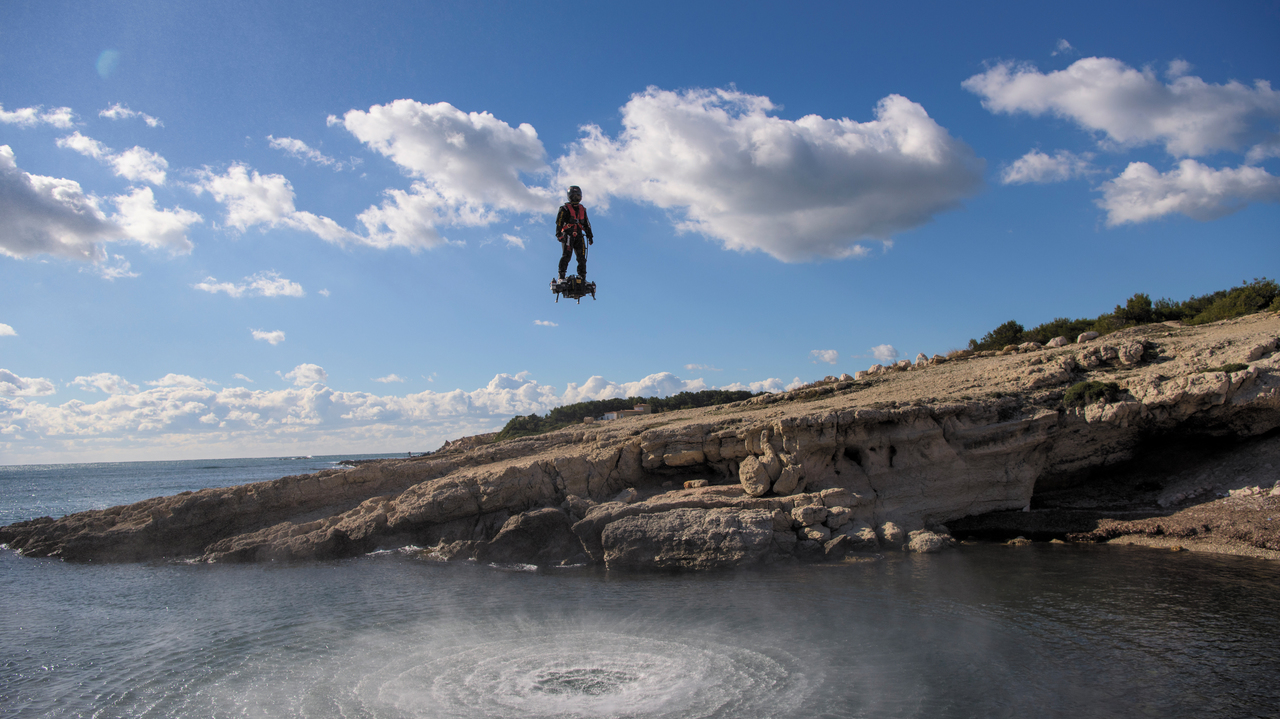Hoverboard Daredevil Speeds Over Atlantic Ocean

In a stunt straight out of a science-fiction film, a real-life, jet-powered hoverboard cruised over the Atlantic Ocean.
Franky Zapata, a hoverboard, took to the skies in a promotional video for the watch company Breitling. The Swiss watchmaker announced its partnership with the Flyboard Air project in December with an incredible video that shows Zapata flying on his hoverboard, reported The Telegraph. Zapata flew about 164 feet (50 meters) over the Atlantic Ocean for almost 7 minutes, The Telegraph said.
Breitling used the video to announce that it will be the main sponsor of Flyboard Air, with the partnership marking "a new chapter in conquering the skies." [Up She Goes! 8 of the Wackiest Early Flying Machines]
"By supporting the FlyboardAir project, Breitling's intention is once again to foster the spirit of daring and invention that has always characterized aviation since the time of the very first 'magnificent men in their flying machines' — that taste for adventure [and] that combination of daring and discipline, which consistently drive aeronautics to push the boundaries of feasibility," Breitling officials said in a statement.
Essentially a flying skateboard — like Marty McFly's famous ride in the 1989 classic movie "Back to the Future Part II" — several hoverboard prototypes have been developed in recent years. The Flyboard Air was invented by Zapata Racing and took four years of development, the company said. The Flyboard Air hoverboard is still a prototype and is not commercially available, the company said.
However, Zapata and his hoverboard have already set numerous world records. In April 2016, Zapata flew the Flyboard Air almost7,400 feet (over 2,200 meters) from a height of about 160 feet (50 m), setting a new world record for the longest hoverboard flight.
Unlike the company's original Flyboard, which connects to a watercraft turbine via a long hose, the Flyboard Air is hose-free. The system's "independent propulsion unit" allows the hoverboard to fly for up to 10 minutes, according to Zapata Racing, reaching a maximum speed of 93 mph (150 km/h) and an altitude of 10,000 feet (3,000 m).
Sign up for the Live Science daily newsletter now
Get the world’s most fascinating discoveries delivered straight to your inbox.
"This has really been a life's work," Zapata said, according to The Telegraph. "Who has never dreamt of leaping out of the water and soaring through the air, free of all constraints? This is the dream that is at the origin of the products we create."
Original article on Live Science.











